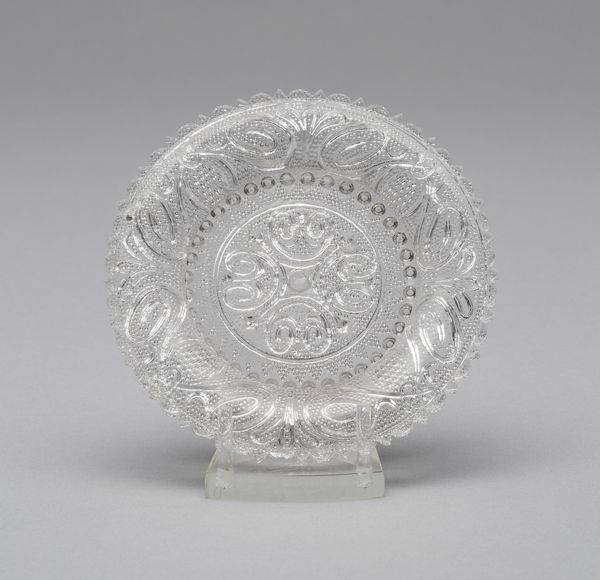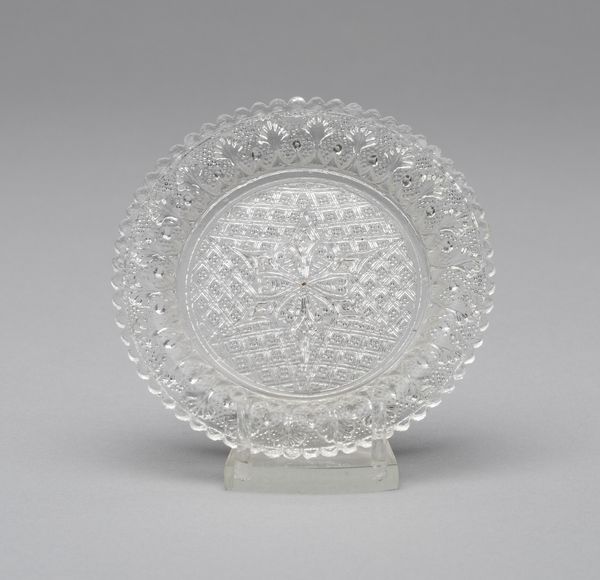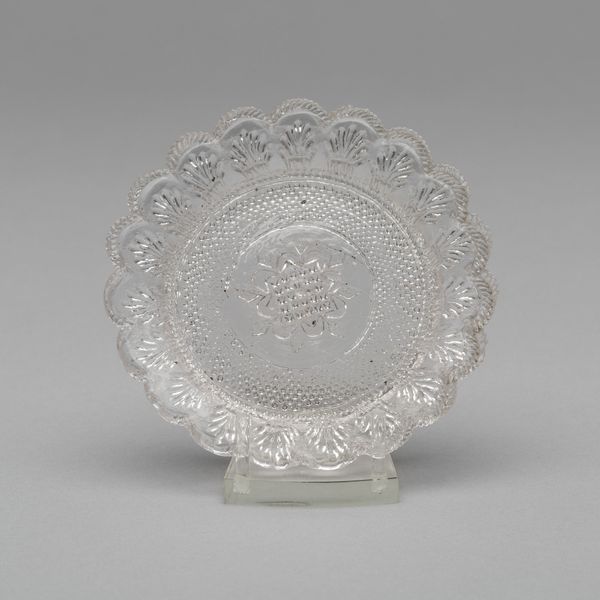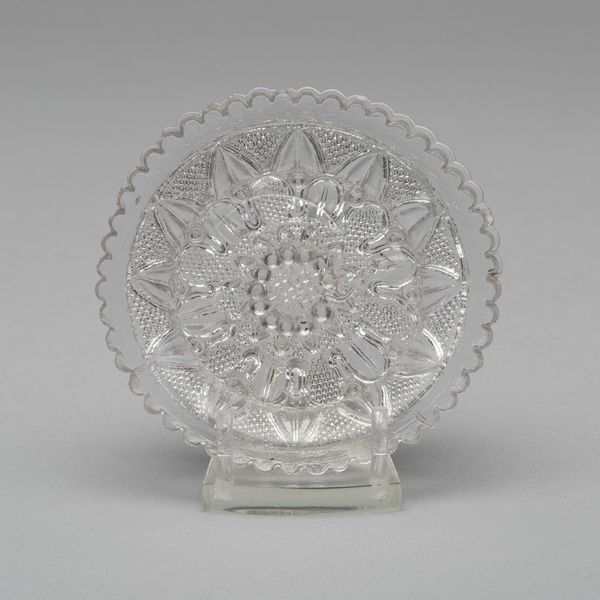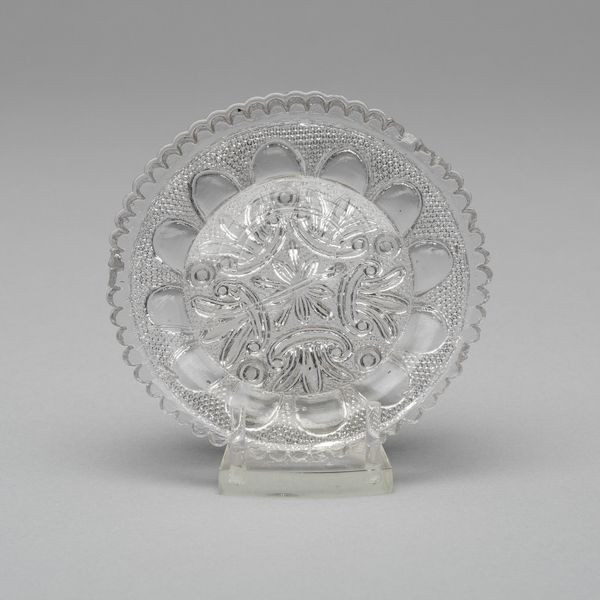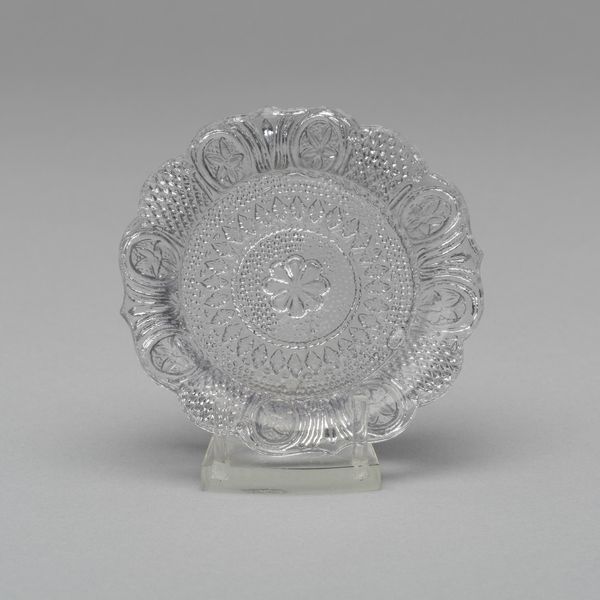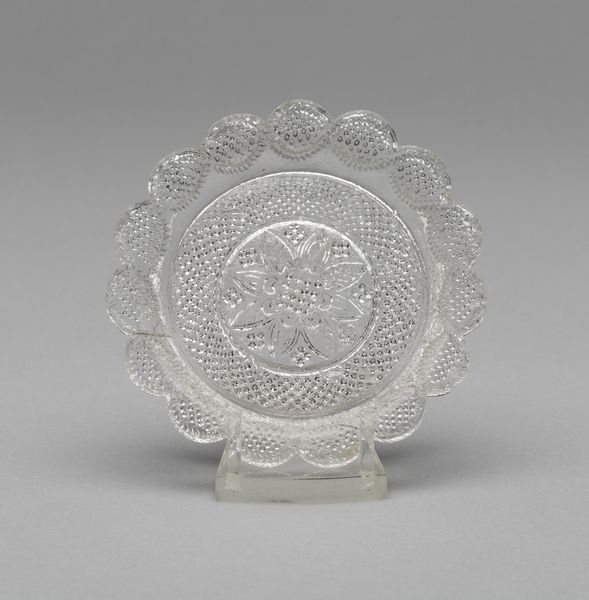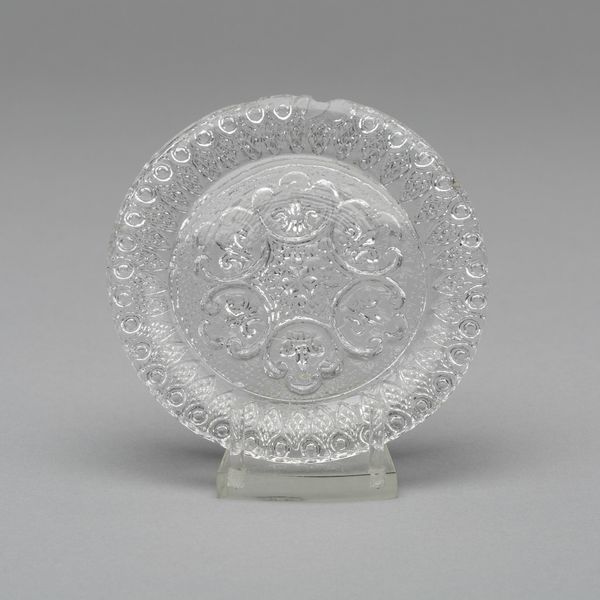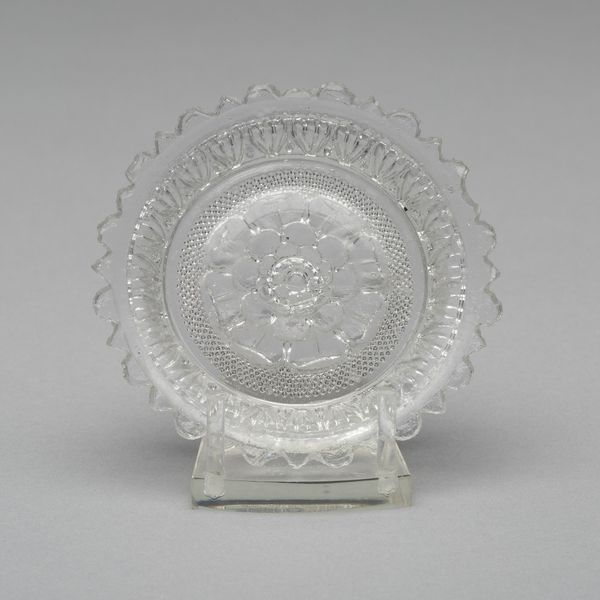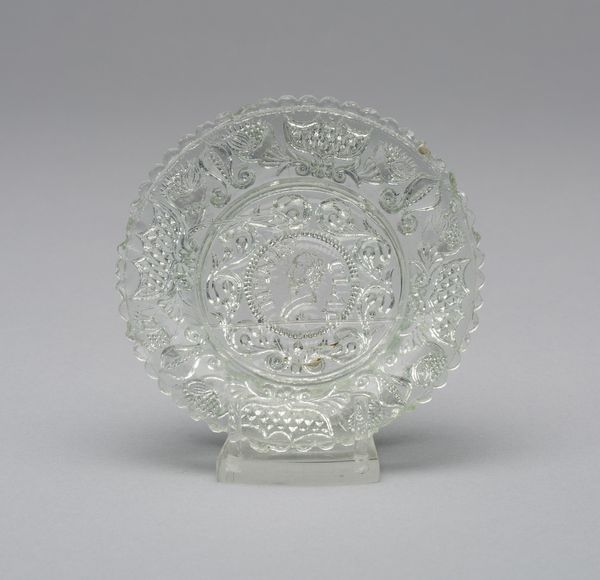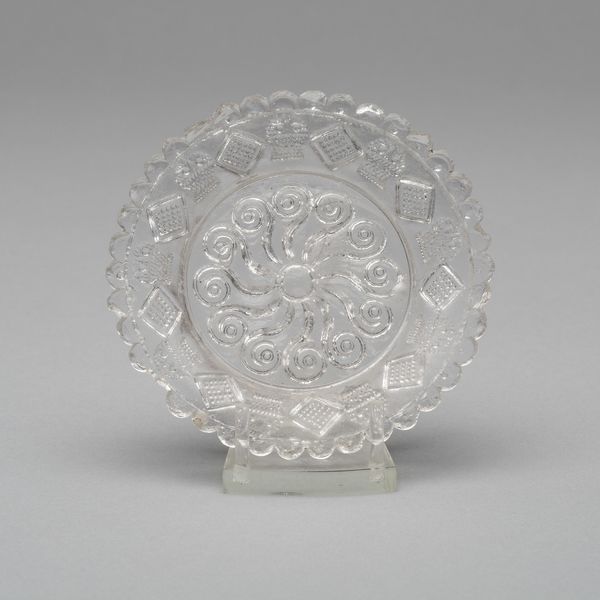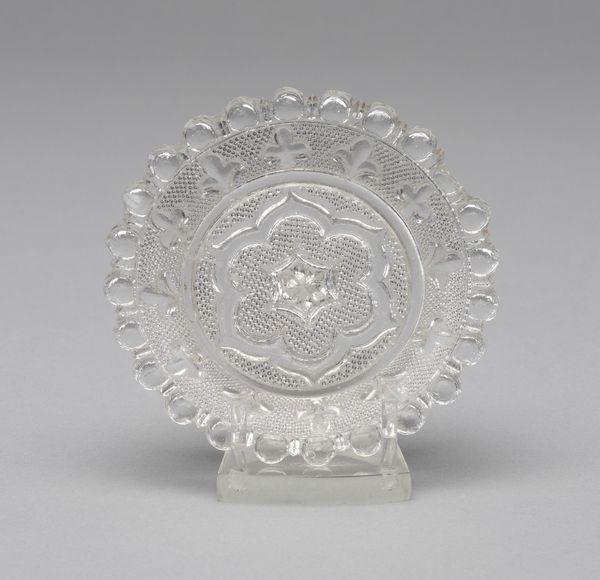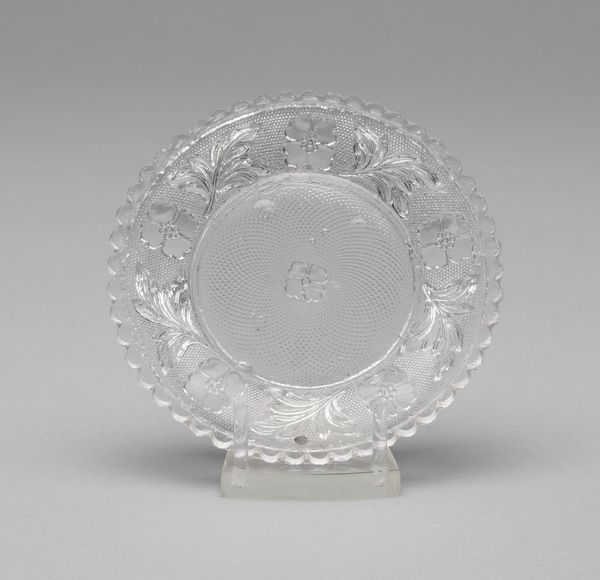
ceramic, glass
#
ceramic
#
glass
#
ceramic
#
decorative-art
Dimensions: diam. 10.5 cm (4 1/8 in.)
Copyright: Public Domain
Curator: The 'Cup plate', dating back to around 1830, is currently held in the collection of The Art Institute of Chicago. Editor: My first thought? Intricacy. The cut glass transforms what could be a utilitarian object into a delicate and almost ethereal item. Curator: Absolutely. Glass, particularly clear glass like this, carries complex connotations. Beyond mere transparency, it embodies ideas of purity, fragility, and even a certain aloofness from the everyday due to its perceived preciousness. The repeating motifs draw on collective cultural memory and invite us to explore layered symbolical interpretations. Editor: Indeed. Considering the era, domestic objects like these reinforced rigid social hierarchies. Only certain classes could afford delicate things. Drinking tea itself became a symbol of refined culture, yet these objects would have been produced by exploited labor. It invites a challenging view, where a lovely surface belies troubling social inequalities. Curator: And the symbolic language speaks volumes, right? We can assume the arrangement of symbols speaks to a deeper, often unspoken cultural vocabulary accessible to its contemporary viewers, but potentially lost on us today. This cross, what could it reference? Editor: The cross motif, perhaps unexpectedly, can be seen as more than a symbol of Christian piety. Consider its use outside explicitly religious contexts as a potential reference to structure and order—very much an aesthetic goal during periods of rapid industrial and social change. Perhaps a reaching for order amidst instability? Curator: That's such a rich idea, a deliberate invocation of established order, through seemingly innocuous design, when societal transformations can appear both exhilarating and terrifying. It serves as a good reminder that everyday objects contain a wealth of unspoken desires and anxieties. Editor: Ultimately, it is in the act of interpreting and historicizing, that even the simplest object like a small glass plate speaks to enduring socio-cultural systems of inequality. The symbolism becomes an agent for acknowledging the nuances of history. Curator: Yes, it allows one to reflect how objects hold meanings which change over time, but still carry echoes of earlier times and beliefs. Editor: The beauty and unease intertwined are what stay with me.
Comments
No comments
Be the first to comment and join the conversation on the ultimate creative platform.
